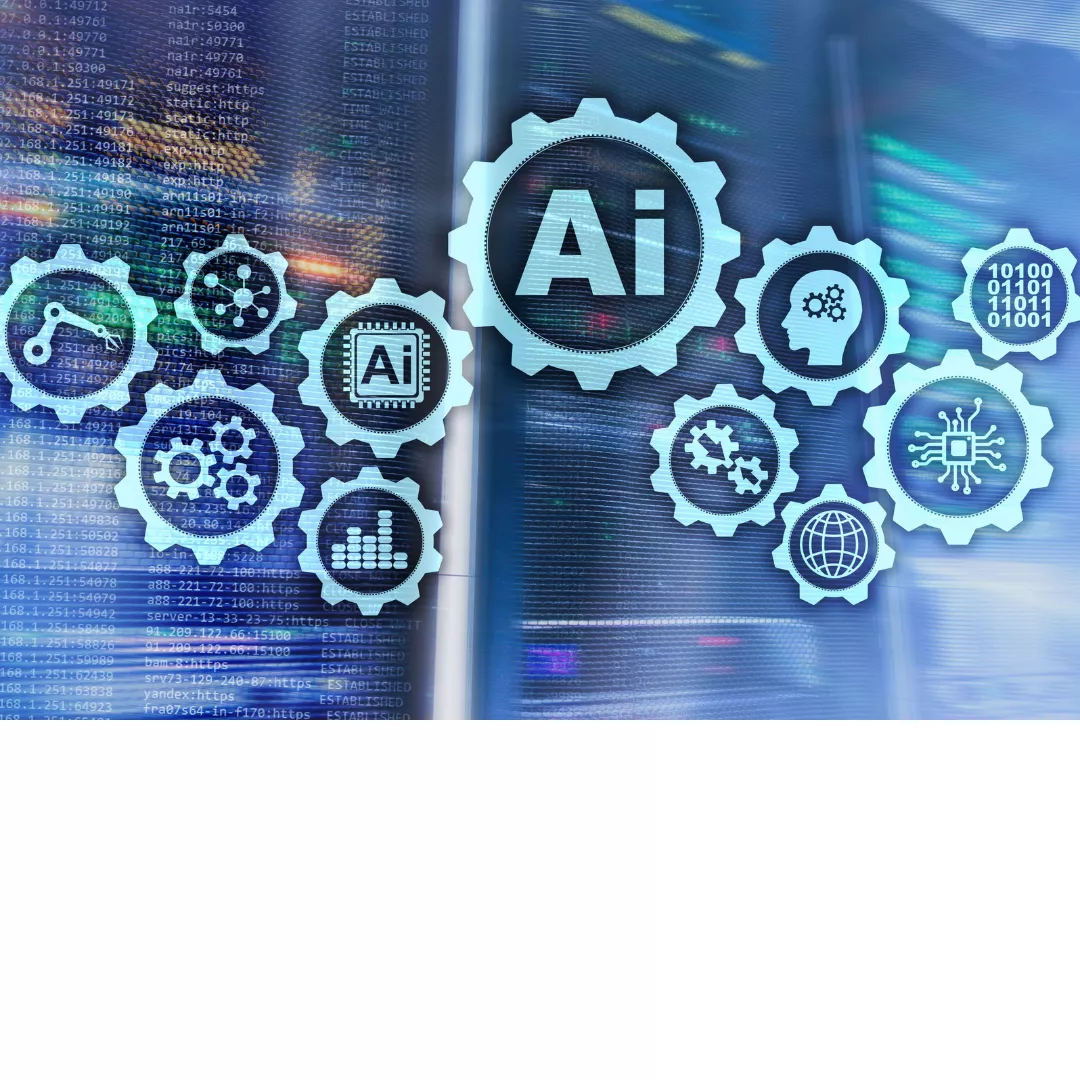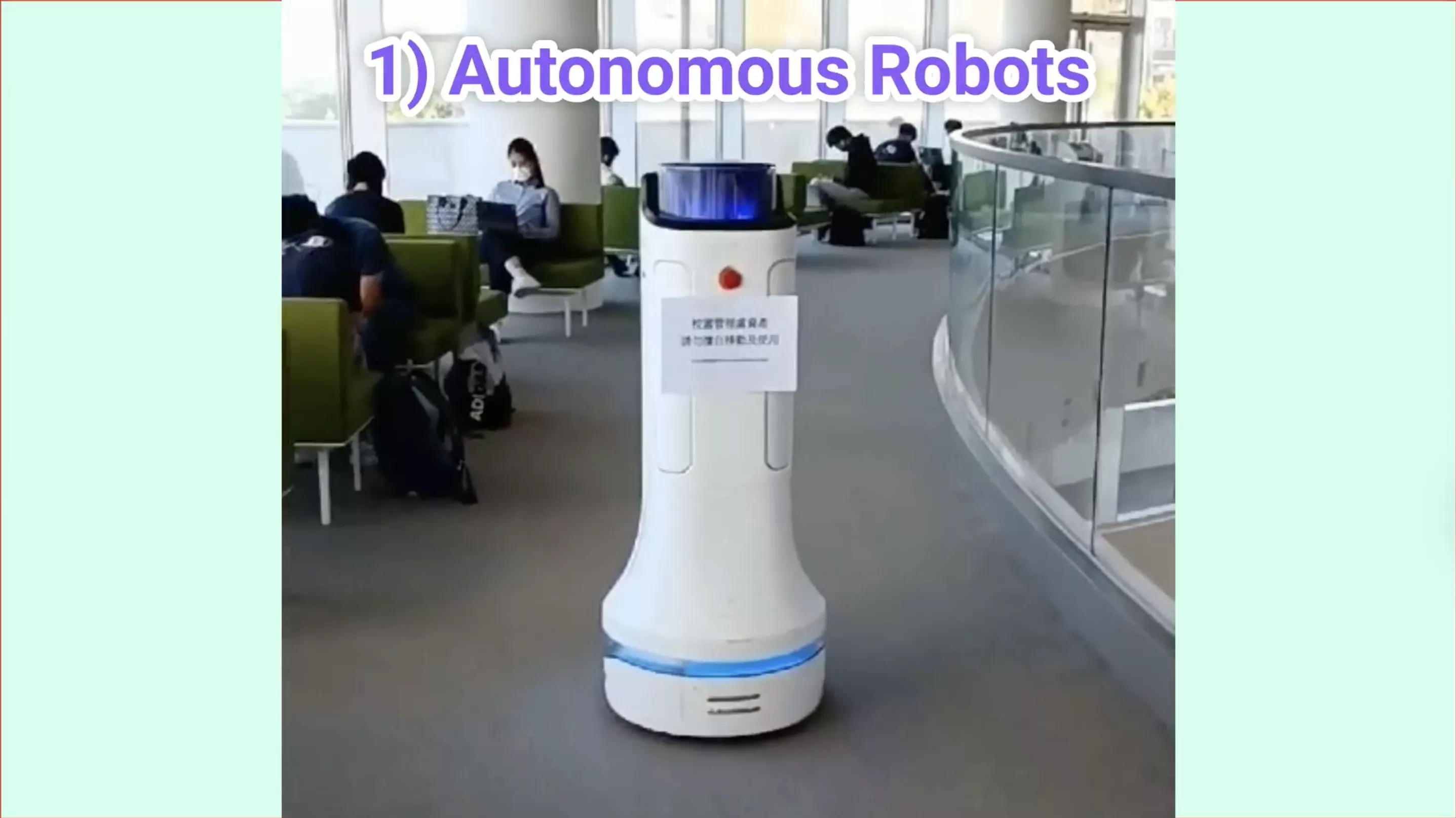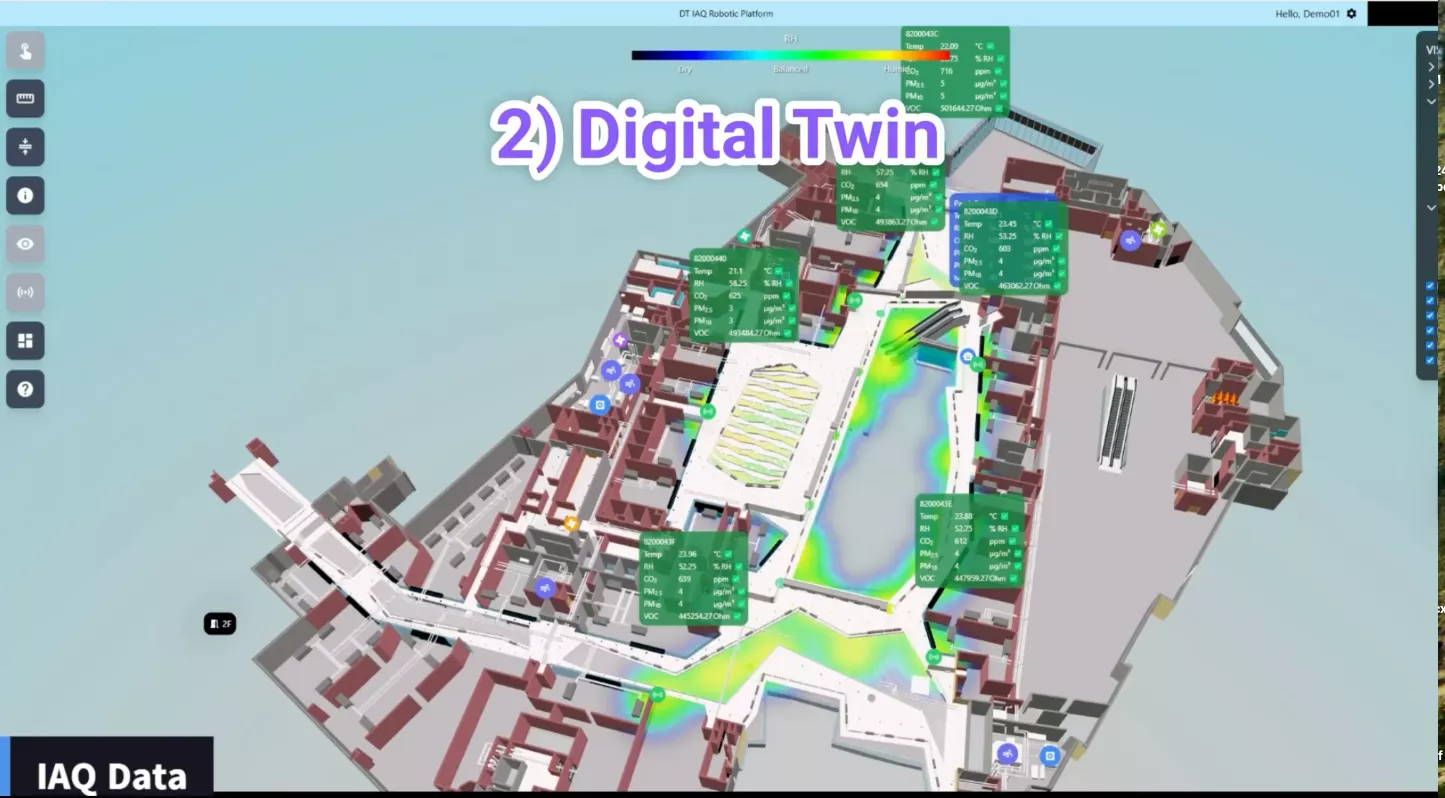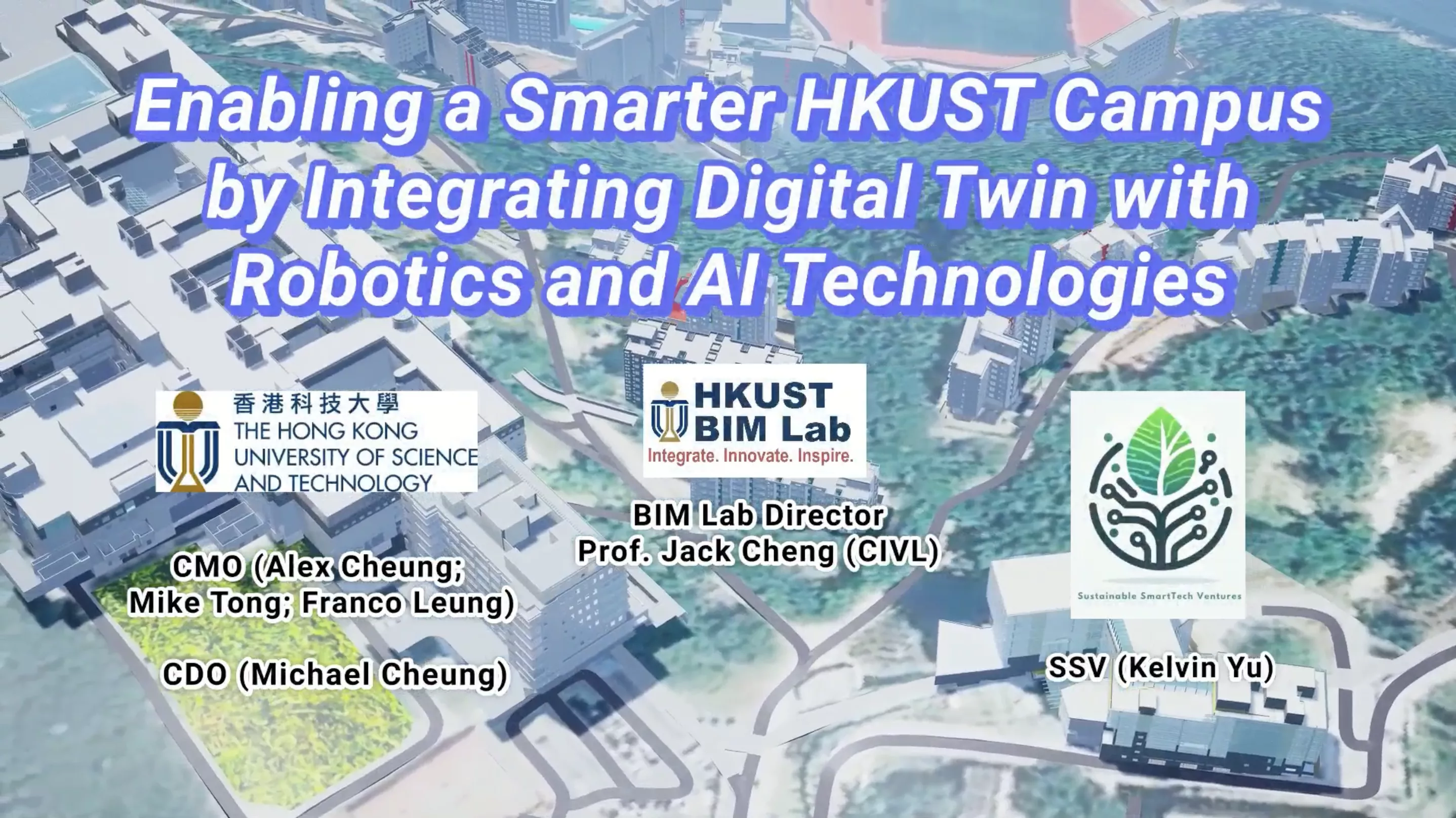Enabling a Smarter HKUST Campus by Integrating Digital Twin with Robotics and AI Technology
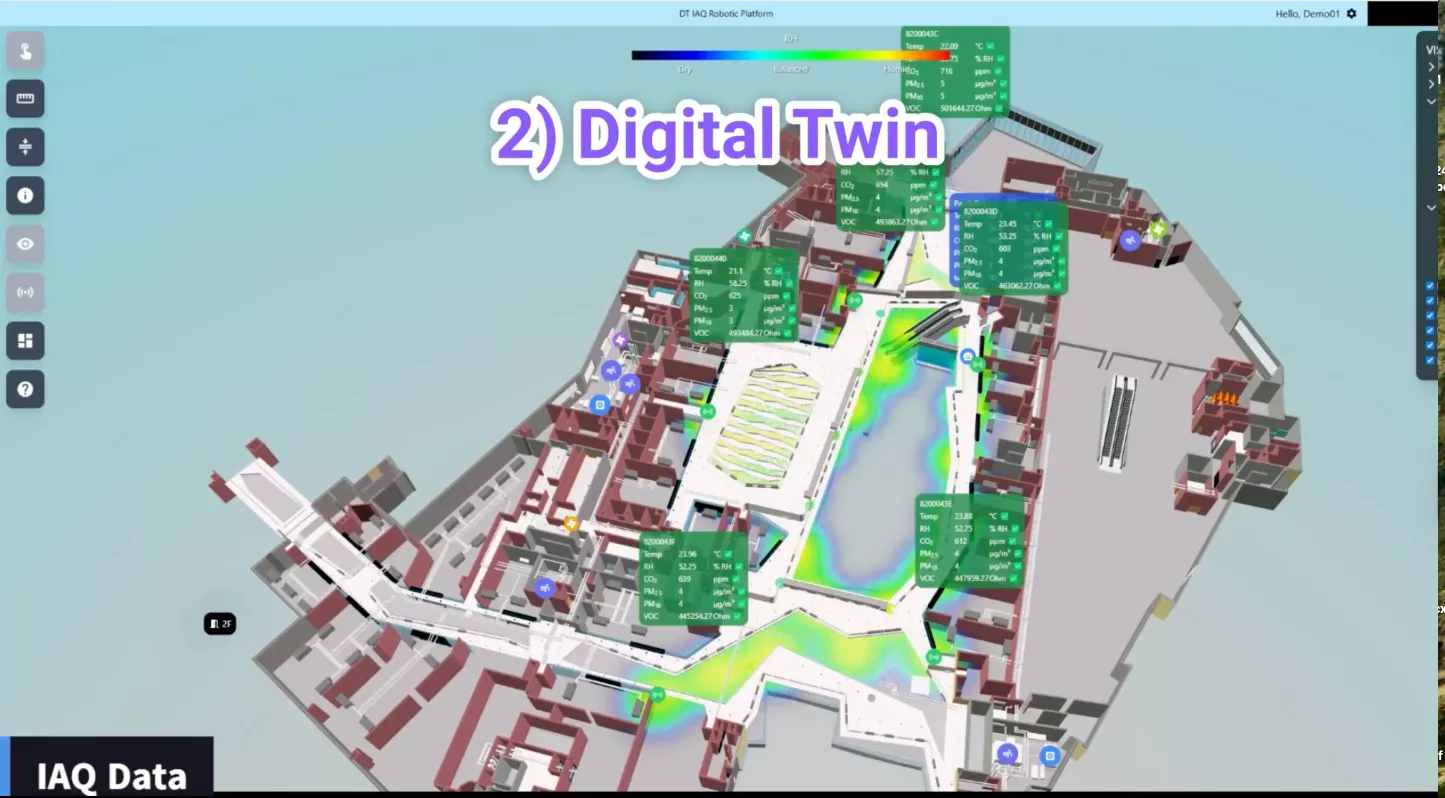
Enabling a Smarter HKUST Campus by Integrating Digital Twin with Robotics and AI Technology
This project builds on two earlier phases (2019 and 2021) to enhance HKUST’s digital twin platform, a virtual model of the campus that integrates real-time data from sensors, building systems, and environmental monitoring. The new phase introduces smarter technologies, including autonomous robots for patrolling, delivery, and air quality monitoring, as well as an AI-powered chatbot for predictive maintenance and decision-making. These upgrades aim to create a more efficient, sustainable, and user-friendly campus by automating routine tasks, improving resource management, and providing actionable insights for better decision-making.
What is the problem this project is trying to address?
The current campus management system relies heavily on manual inspections, static sensors, and disconnected data streams, leading to inefficiencies, delayed responses, and wasted resources. For example, human-led patrols are time-consuming and less precise, static air quality sensors cannot cover large areas effectively, and uncoordinated robot operations result in redundant tasks. These challenges increase costs, reduce productivity, and hinder sustainability efforts.
How does this project support our sustainable smart campus as a living lab vision?
This project upgrades HKUST’s digital twin platform by integrating intelligent robots and AI technologies to automate and optimize campus operations. Robots equipped with sensors and AI cameras will patrol the campus, monitor air quality, and deliver items, reducing the need for manual labour and improving efficiency. For example, a robotic dog will inspect construction sites for safety hazards, while a panda-themed robot will monitor air quality and trigger cleaning or disinfection when needed.
The digital twin platform acts as a control hub, visualizing real-time data from robots and sensors. Facility managers can use it to monitor operations, optimize energy use, and respond proactively to maintenance needs. An AI-powered chatbot will analyse data trends and provide actionable recommendations, such as predicting equipment failures or suggesting energy-saving measures.
This project is sustainable because it reduces resource consumption, minimizes waste, and uses durable, reusable equipment. By integrating robotics and AI with the digital twin, it creates a scalable, future-ready solution that aligns with HKUST’s vision of a sustainable smart campus.
What's next?
The project will develop and deploy the robots, integrate them with the digital twin platform, and launch a user-friendly app for real-time monitoring and control. After testing and optimization, the system will be fully integrated into campus operations. Future plans include expanding the technology to other facilities, sharing findings with the broader community, and exploring commercial applications to inspire similar innovations globally.
